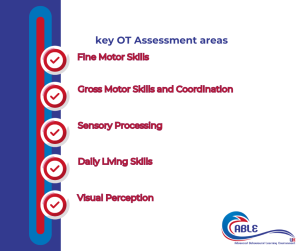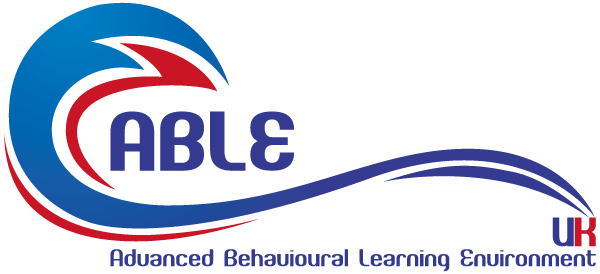Understanding Your Child’s OT Assessment Results: A Parent’s Guide to Making Sense of the Evaluation

If you have carried out an assessment for your occupational therapy (OT) for your child, getting your child’s occupational therapy assessment results can feel very intimidating. As a parent, you might find yourself staring at pages filled with clinical terms and wondering what it all means for your child’s development. In this article, we will deconstruct OT results and explain the key terms in understandable pieces and explore what they mean for your child’s journey ahead.
The Purpose Behind the Assessment
When you first stepped into that occupational therapy clinic in Dubai, you probably had specific concerns about your child’s development. Maybe they were struggling with handwriting, having trouble with daily routines, or showing signs of sensory sensitivities. The occupational therapy assessment serves as a comprehensive evaluation of your child’s abilities across multiple areas of development.
Think of this assessment as a detailed map of your child’s current abilities. It helps identify both strengths and areas that need support, ultimately guiding the creation of a personalized therapy plan. Understanding these results empowers you to actively participate in your child’s therapy journey. Now, let’s explore the different areas of assessment to give you a better understanding of what each assessment is about and how to interpret the result.

Fine Motor Skills
The assessment typically begins with an evaluation of fine motor skills – those small, precise movements that children need for tasks like writing, buttoning clothes, or using utensils. Your child’s results might indicate their grip strength, finger dexterity, and hand-eye coordination levels. For instance, if the report mentions “below age-expected pincer grasp,” this simply means your child might need help developing the thumb-and-finger grip used for activities like picking up small objects.
Gross Motor Skills and Coordination
Moving on to bigger movements, the assessment looks at how your child coordinates their body for activities like running, jumping, or playing ball games. The results might discuss balance, core strength, and overall coordination. When the report mentions “postural control challenges,” it’s referring to your child’s ability to maintain stable positions during various activities.
Sensory Processing
A significant portion of the assessment focuses on how your child processes and responds to sensory information. This section might reveal why your child seems oversensitive to certain textures, sounds, or movements. The results could explain behaviours you’ve noticed at home, like avoiding certain clothing textures or becoming overwhelmed in busy environments.
Daily Living Skills
Occupational therapists assess how independently your child manages everyday tasks appropriate for their age. This includes activities like dressing, eating, and personal hygiene. The results might indicate whether your child needs support in sequencing these tasks or developing the physical skills to complete them.
Visual Perception
This part of the assessment evaluates how your child processes visual information. It looks at skills like distinguishing between similar shapes, remembering visual patterns, and understanding spatial relationships. These abilities are crucial for reading, writing, and navigating the environment.
Making Sense of the Scoring
Most OT assessments use standardized scoring systems that compare your child’s performance to typical developmental milestones. You might see terms like “percentile ranks” or “standard scores.” For example, if your child scores in the 30th percentile for fine motor skills, it means they performed better than 30% of children their age in this area.
However, remember that these scores are just one piece of the puzzle, you should interpret them in absolute terms. They help identify areas needing attention but don’t define your child’s potential or overall abilities. Every child develops at their own pace, and these assessments serve as guidelines rather than absolute measures.
Occupational therapy reports often contain professional terminology that can seem overwhelming. When you see “proprioception challenges,” it’s referring to your child’s awareness of their body position in space. “Visual-motor integration” relates to how well your child coordinates their eyes and hands together for tasks like catching a ball or copying from a board.
Don’t hesitate to ask your occupational therapist to explain any terms you don’t understand. They can provide real-life examples of how these clinical concepts apply to your child’s daily activities.
The assessment results lead to recommendations for therapy goals and strategies. Your occupational therapist will work with you to develop a treatment plan that addresses the identified needs while building on your child’s strengths. This might include regular therapy sessions, home exercises, and modifications to daily routines.
Many families in Dubai find that successful therapy outcomes rely heavily on incorporating recommended strategies into their daily lives. Your therapist can show you how to adapt activities and environments to support your child’s development between sessions.
The Role of Parents
Your understanding of the assessment results plays a crucial role in your child’s progress. As you become familiar with the areas needing support, you can better advocate for your child’s needs at school and in other settings. You’ll also be better equipped to recognize improvements and celebrate progress along the way.
Remember that the assessment results represent a snapshot in time. Children develop at different rates, and with appropriate support, many skills can improve significantly. Regular reassessments will help track progress and adjust therapy goals as needed.
Conclusion
Understanding your child’s occupational therapy assessment results should be stress you out, with open communication with your therapist, and a willingness to learn, you can get trip on the information that matters. These results serve as a roadmap for your child’s developmental journey, helping guide decisions about therapy approaches and support strategies.
By taking the time to understand the assessment findings, you become a more effective partner in your child’s therapy process. Remember that your occupational therapist is there to help you interpret the results and answer any questions you may have along the way. Together, you can use this information to create a supportive environment that helps your child thrive and reach their full potential.
Trust in the process, celebrate small victories, and keep in mind that every child’s journey is unique. With understanding and appropriate support, you can help your child develop the skills they need for success in daily life.
